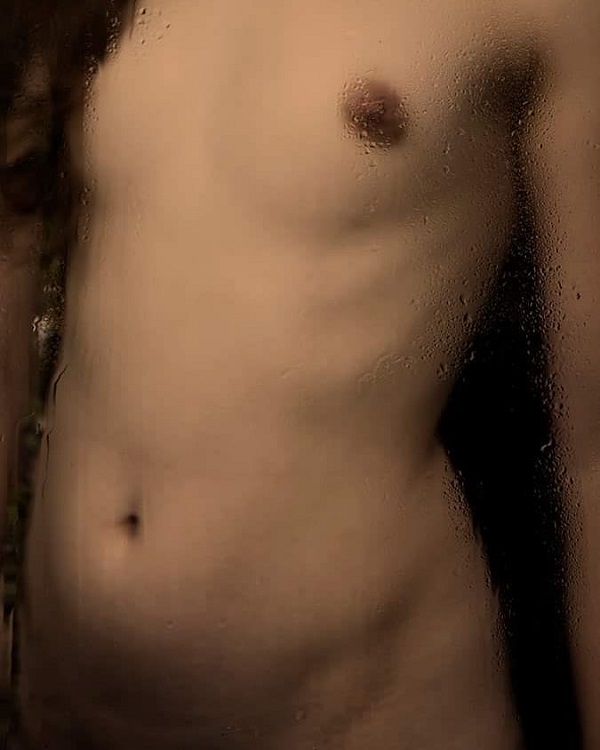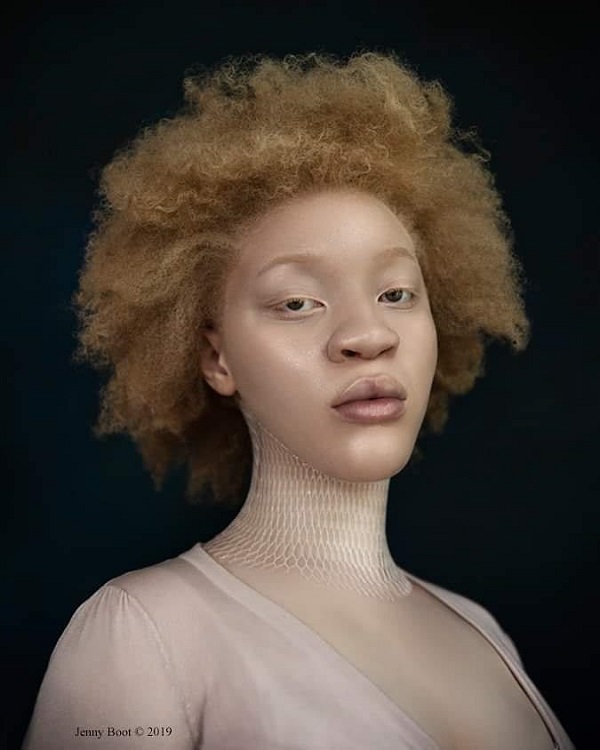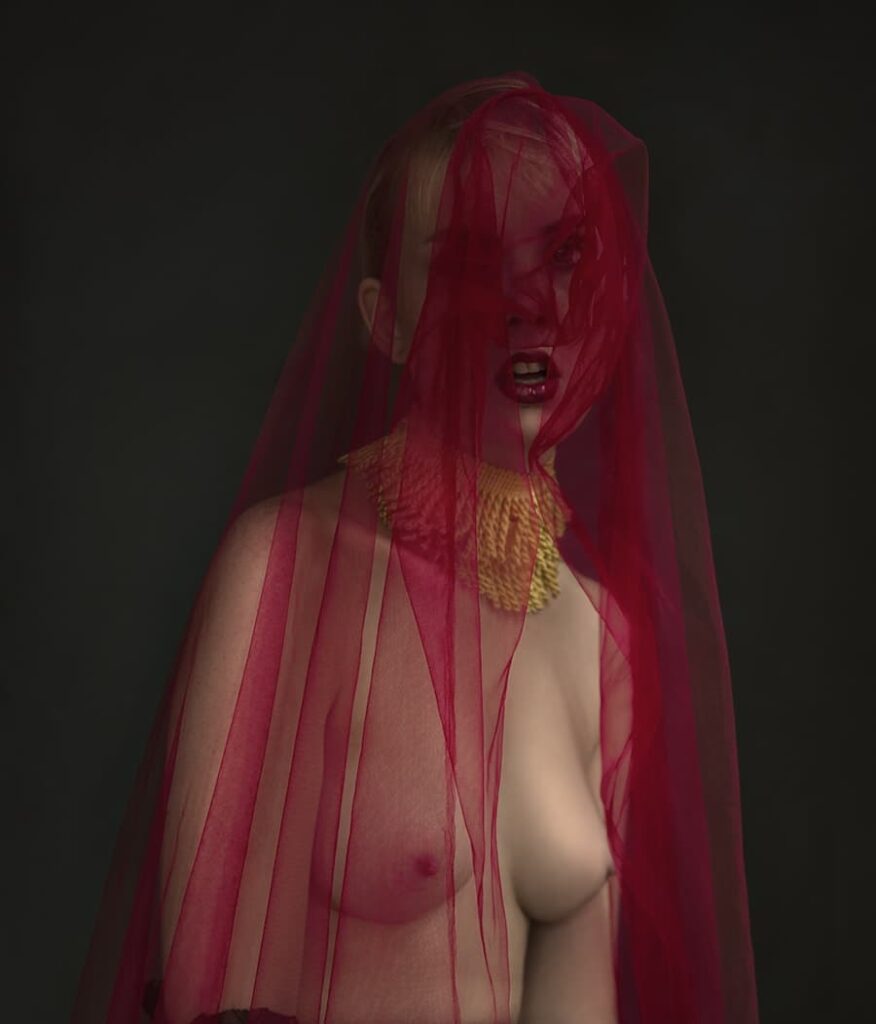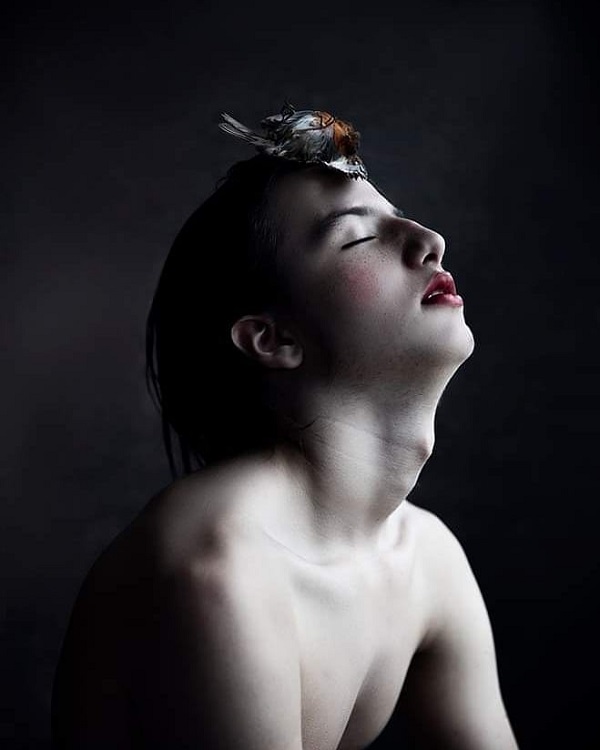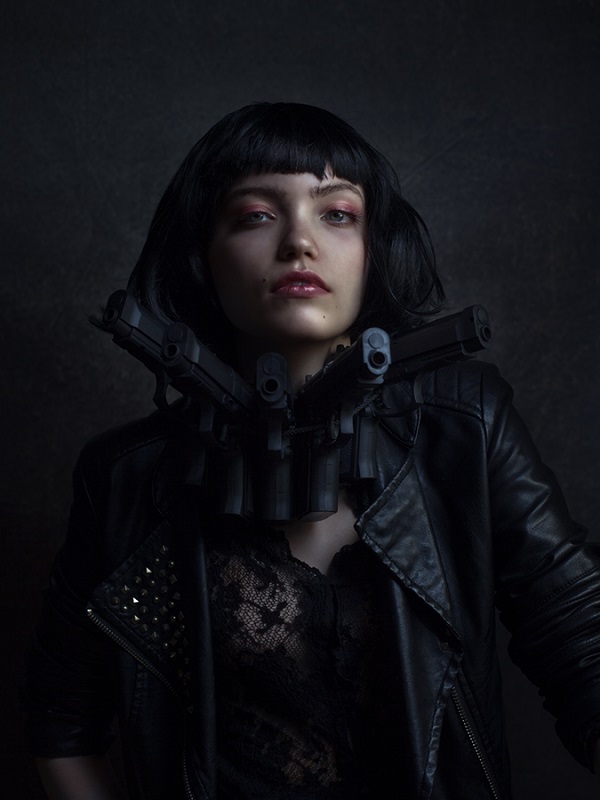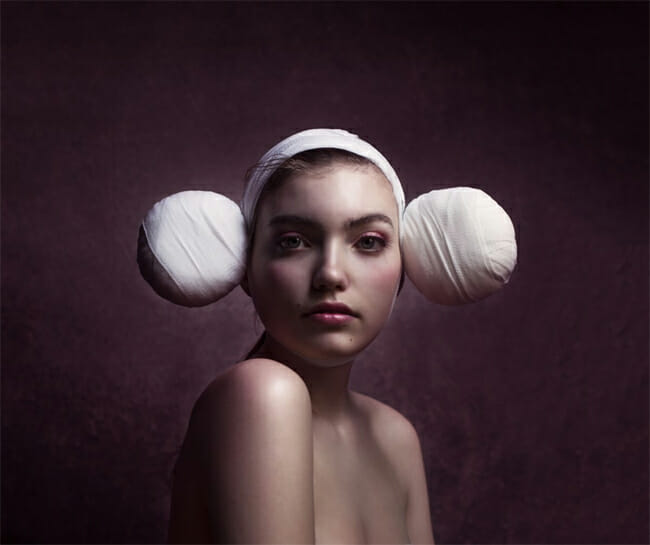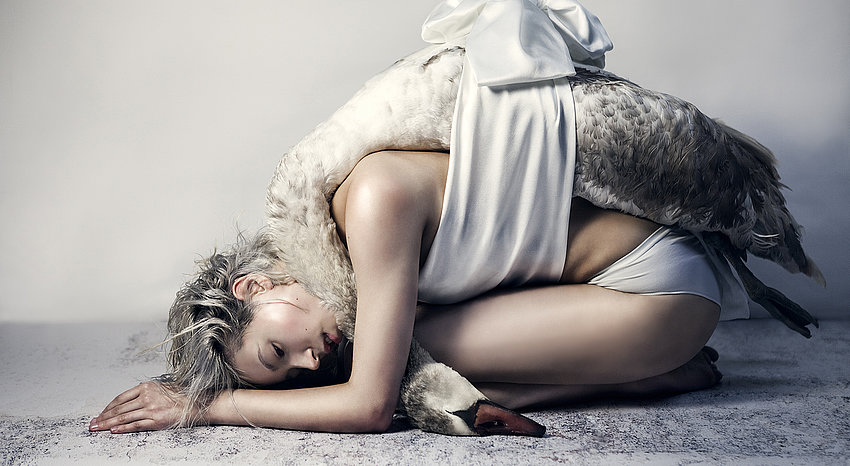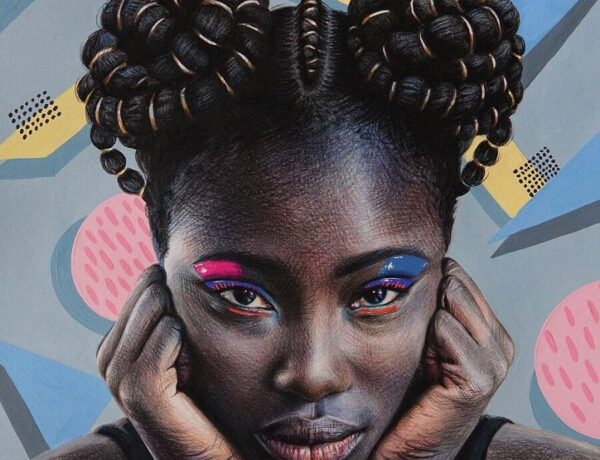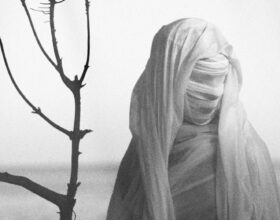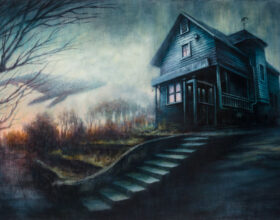Portraits of exquisite elegance and refinement, beautifully lit, ordered and composed and in perfect balance, but underneath the surface something grittier lies. The photography of Jenny Boot abounds with contradictions; light and dark, stylized and hyper-real, sumptuous and simple, seductive and disquieting, classic and contemporary, traditional and unconventional, direct and secretive. It is within these paradoxes that the beauty, poetry and honesty of the images reside.
I’ve found out that I’m not just a storyteller but I’m making poems.
Through her skillful and sensitive use of light and dark, Jenny Boot creates a stage on which to focus her lens. Within that dark tableau, she places young women of haunting beauty, whose direct gaze belies their vulnerability. At once traditional and edgy these young women are strangely unsettling. Their powerful personalities lie just beneath the surface as they breathe their secrets to us. They know grief and agony, torture and submission, oppression, hope and finally power. Through these women, Jenny has explored difficult issues such as greed, beauty, consumerism, female circumcision and child marriage.
I think that all my art is meant to please the viewer. And that it is meant to get self-approval, to create a right to exist for myself through beautiful girls. I have something with aesthetics, with beauty. The contents may be raw but the outside must be aesthetically clean.
I read that you spent a number of years as a social worker. How long did you do this? Has that work had a long-term effect on how you view life? Has it impacted in any way on your philosophy or construct of art. If so, can you describe in detail, how?
Yes, I have had a long search for my ultimate goal in my life, making art. I think that work as a social worker has given me a lot of knowledge of people. I have always had empathy for people who live on the fringes of society. Art is a way of finding or freeing myself. Whether or not that assistance has any influence on my art, I wonder. Everything in my life affects how I am now and what I make, but my work today has less and less to do with my own past. Sometimes that is a shame because it was a nice source to exhaust, but perhaps I have done too much therapy and awareness and now my life as an artist is too good! On the other hand, it was not until my work was no longer about myself and psychology, only then did I become successful.
You then began your art career as a painter. Why did you switch to photography? What does that background and experience as a painter bring to your photography?
Painting was always a form of expression for me. What I could not express with words I could put into painting. After a while, I learned to paint better by considering how a still life was painted. How the shape was made and especially shines on a golden pot. It fascinated me how you could imagine gold with many colors but especially by simulating the shine with a white spot. I think that way of observing can still be seen in my work. The light is always the most important element. If it falls on the right slice, it gives a nice shape and shines to the face or object. I only switched to photography when I had a son. I could not lose myself in the nights in painting because I had to be standby. It was only when I bought a digital camera that I noticed that I was able to dive into my creative process much faster and that it was easier to combine. Soon I noticed that I preferred to do it every day and then decided to go to the photo academy. I had no idea of technology and photography, but creativity was possible at the academy. It has been a long learning process.
Are there photographers who have influenced you or your style and aesthetic? If so, can you tell us who they are and describe how that influence manifests itself in your work?
Since I was 17 I think, I collected postcards by Jan Saudek. He certainly had an influence in the beginning of my work. It took a while before my work became enough that he was no longer visible. So I actually aim for no influence from other photographers. For a long time I have looked at fashion photographers and especially to see why my work did not look as good as theirs did. What made the difference? It turned out to be the light and the retouch again. I practiced that for a long time until I got a result that I thought was good enough. I have developed my own style that is now being applied by several people. Recently I even came across a workshop in Jenny Boot style. I have to laugh that I have developed a ‘style’. Of course, there were already photographers who were moving in the same direction as me, but finally everyone is just different. You are on the same bus, but the final destination is never the same.
I notice you use professional models. Do you use other models as well? If so, what do each bring to your photographs? Do you find professional models easier to work with in terms of them understanding and interpreting a brief or your instructions? Or does their experience sometimes get in the way of freshness or spontaneity?
I really do not only use professional models. Usually these are young girls who just start out with a model agency. They are new to the profession or I have discovered them on Facebook. I like it when someone is inexperienced because I usually want something different from them than the fashion poses. I want to keep control while shooting and not have them do everything themselves. There is something beautiful with that and if they don’t give the same thing to another photographer then that’s exactly what makes you stand out. I want to create a kind of unity with the model while working, that she understands what I want through my direction, and my focus.
Jenny, you have photographed for Vogue. Have you done much editorial work for them? Can you tell us about that experience? Have you done editorial photography for other fashion or lifestyle magazines?
I am a graduate as a fashion photographer. It really was my dream to work for magazines and a big kick when I had such a magazine in my hands that contained my work. Actually, when I graduated, my work might be better to hang on the wall. All my work during my graduation was sold and finding work with magazines turned out to be a lot harder. I had made a nice editorial for JFK magazine and it seemed that after that the market collapsed. Newcomers no longer had a chance to come in, and I noticed that it was a very young culture that, as a forties, I did not take for granted. But that editorials may not really suit me very well either. I want to focus much more on one image that has to stand on itself and is very strong. In an editorial, you make a series that reinforces each other but each one is not always very interesting. I’ve found out that I’m not just a storyteller but I’m making poems.
You do fashion editorial work, commissioned portraits and, of course, your creative art photographs. Do you find each to be as equally creatively satisfying? Do you find that each informs the others? If so how?
I do not do editorial work at all anymore. In any case, I find work on fashion assignments less satisfying. I still really enjoy doing commissioned portraits. I think it’s nice to find that beautiful person in every person that you can fall in love with. If I capture that in a photograph, I am happy with the result; but my creative personal work is the best thing to do. I can completely create what I want. That gives the freedom that I cannot find in all that other work. And I am very happy when I have that freedom
What ideas underpin your art? Do you have an underlying paradigm that connects all your series?
I think that all my art is meant to please the viewer. And that it is meant to get self-approval, to create a right to exist for myself through beautiful girls. I have something with aesthetics, with beauty. The contents may be raw but the outside must be aesthetically clean. Growing up as a red-haired girl with freckles, I got the message that the red hair was “too bad” and that you certainly did not grow it long that would only make it worse. Make it more like a witch. When I was young, I wanted to go to the doctor to ask if anything could be done about my freckles. Instead of telling me that they were beautiful, my mother also wanted to see if anything could be done about it. The doctor was amazed and assured me that later all boys would love them. That did not happen. Maybe since then I want to capture beauty. In my older work, the girls were never free; they were in dire positions in which they surrendered themselves. Nowadays, they can be “just” more ordinary.
I notice that you use predominantly black backgrounds and that your photographs have a very dark, pared back aesthetic, and your models are quite stylized in their attire, pose and final photographic manipulation. Light and contrast is a strong feature in your work. Can you talk about the aesthetic you want create in your photographs and how you do this?
Technically speaking, the light is simply more beautiful in the dark. You cannot see the stars without the darkness! Sometimes I try to make it lighter in post-processing, but then step back to the dark again. It seems I love the dark but I am just in love with the light. I am very happy when the light outside suddenly becomes special, a sunset or when it is cloudy but the sun filters through it. As a child, I thought I could see the light particles fall during the twilight zone when you are outside or in bed early in the morning. I also think that my work changes with the seasons, in the winter they are darker than in the spring. The light and aesthetics in my work is very important, the shine on the skin, the highlights. But the look of the model and the emotion she emanates is equally important. Without the right model with the right look or feel, the photo, no matter how well it has been exposed, will nevertheless fail. For me it is more about feeling than about technology, but on the other hand, the right model can produce an even worse picture in the wrong light.



